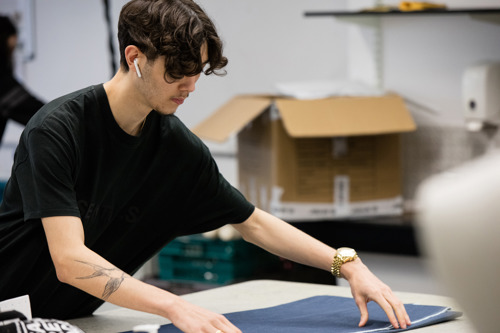Tell us about the garment design process. What stages does a product have to go through to get to the shop floor?
The process actually isn't very complicated.
It starts with an initial idea. For some people, this might be a simple hand-drawn sketch, or for others, it can be a highly-detailed CAD or a full technical specification. We can work from most concepts, but as a manufacturer, it's always better to have as much information as possible.
Once a design has been presented, there’s usually a little back and forth where we clarify or amend requirements. Sometimes technical limitations do come into play. For example, embroidery can be limited by the complexity of the design.
When the design is finalised, we create patterns and order all the necessary materials like fabrics, custom hardware etc. Once this is done, samples are produced and sent to the customer. When they’re approved, we start the bulk manufacture.

How would you advise a brand to check on their product's quality?
With the quality of a product, there are two main areas to look at: the quality of the fabrics and the quality of the construction.
Quality of fabrics is the difference between being able to buy a 100% cotton t-shirt for £5 or £50 from different brands. There are many different grades and extra washes that can be added to a fabric to improve softness or hand-feel etc. Fabrics that have these treatments and are from a premium source will be of higher quality.
When it comes to construction, handmade is always best. This is because you can rely on the person actually stitching your product together to have the experience and skill to be very accurate. At Hawthorn, one of our quality checks is that every item is checked by the person stitching it together.






